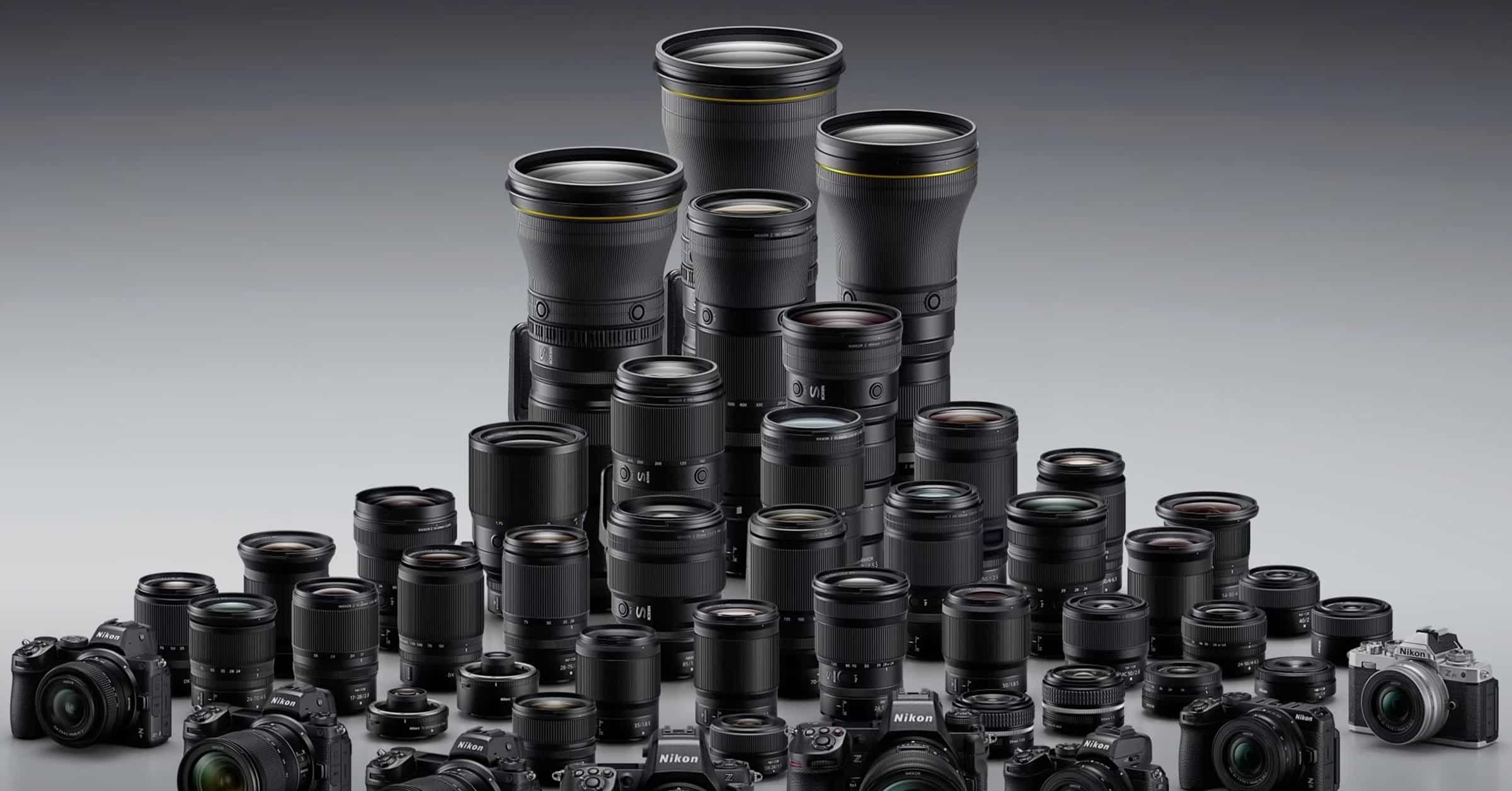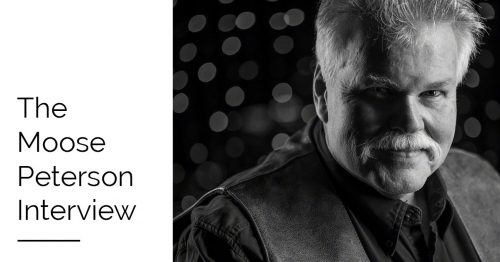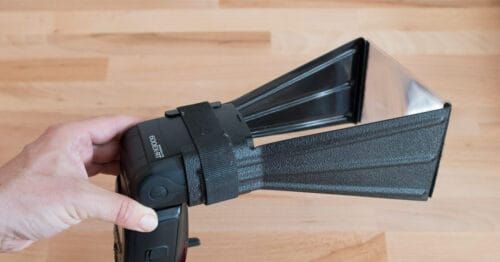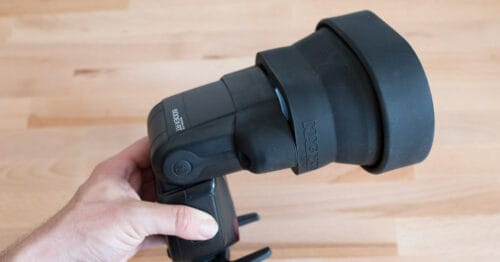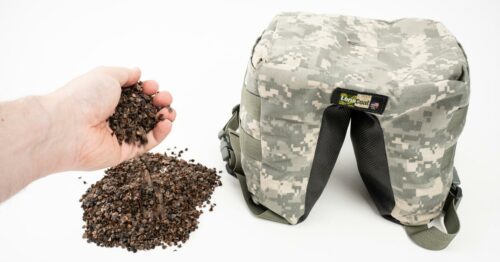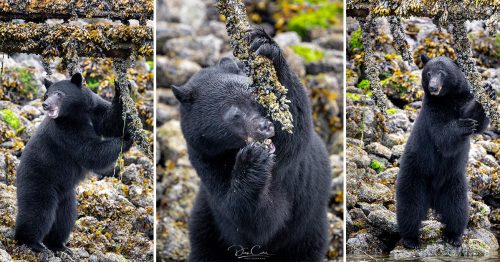Next up in our ongoing series of interviews with leading photographers, Matt Jacques sat down to chat with Canadian wildlife photographer Michelle Valberg. Michelle is a Nikon Canada Ambassador, a fellow of the Royal Canadian Geographical Society and the Explorer’s Club, and was the first Canadian Geographic Explorer-In-Residence.
She has built a multi-decade career and garnered all kinds of accolades along the way. With a particular passion for Canada’s north, Michelle shares her photographic journey and offers hard-earned wisdom from both the field and as a business owner in the conversation below.
MJ: Hi Michelle! Thanks so much for being up for this conversation. For any folks that somehow might not have heard of you or aren’t familiar with your images, could you just tell us a little bit about yourself and the type of work that you do with your photography?
MV: I am a Canadian Nikon Ambassador and also a Canadian Geographic photographer in residence. I live in Ottawa and I’ve been a photographer for 30 years. Kind of hard to believe. Yeah, so I’m super, super fortunate and lucky and blessed to do what I love every day.
I kind of have two sides to my work. I still have a studio here in Ottawa where I am still doing portraits; and then I have this whole other wildlife, nature and adventure photography side. So I kind of have a little bit of a double life going on right now.
MJ: So your photography business is built around these two rather distinct pillars. What was your journey to get there? I’m certainly more familiar with your nature and wildlife work – have you always done that?
MV: That’s a great question. I originally went to the University of Ottawa for their fine arts program, and then I went to Algonquin College, in the photography program. I found I was better suited to the college because I really wanted to be a working photographer, and I really wasn’t getting the technical journey that I was expecting out of the university’s fine arts program. And when I was in school, I started my business.
This is back in the days of film photography and the photography market was saturated. So, I started my business in the video production side of the world, just because I discovered there was nobody really doing the middle-end of the videography market. It was like, really, really high end or really, really low end. So I kind of came in the middle and self-learned because I wanted to be my own boss. I did everything, including weddings and bar mitzvahs. There wasn’t a job that I said no to, just because I had to make a living at what I wanted to do. Then because I came into the video side of the business, I started to work for other photographers that were starting to offer video wedding videos.
I got to work with some really great, amazing photographers along the way, and I learned a lot. I kind of got to be a little spy, because I was there doing video but my love and my passion was photography. I always said when I was in school, I was never going to be a wedding photographer. Most photographers who love wildlife and wildlife photography, dream to shoot for National Geographic, right? But I knew I had to learn my craft, which is, I think, hugely important. And we can learn our craft in so many different ways.
MJ: That’s that you were able to identify those trends and pivot your business, while still keeping your eyes on the longer-term goal.
MV: When shooting a wedding, you have to think really quickly, you have to act very quickly. You’re constantly looking at the lighting as you’re working within the situation that you have. You don’t necessarily have the control of the light, most of the time. I haven’t done weddings in over a decade now, but there’s a lot that I learned from shooting that way and still apply to what I do today with wildlife.
MJ: So when or how did you get your start with wildlife and nature photography?
MV: My parents were birders, and my dad was a hobbyist photographer. So we spent a lot of time together and would go out and shoot or just go out and be in nature. It was always a part of my world.
So I’ve photographed nature and wildlife all along, whenever I could find the time. I was well known for my portraiture earlier on and had done a photo book that was popular. So I wanted to do another book, but I wanted it to be on Canada and I wanted it to be on what we had to lose. I wanted to show what we have to lose if we don’t take better care of our planet in a very soft, subtle way. This was about 13 years ago.
Working on that book, I made a phone call to Pond Inlet, Nunavut and said: “I want to come up to the Arctic, I can’t do a book on Canada without going to the Arctic”. At that point, I only knew that it was really far away and that there were polar bears there. And that’s what I wanted to photograph. Sometimes you make that call, write that email, or have that connection that can lead you into a whole different direction. And for me, it was that call that I made to Pond Inlet that changed the course of my career.
MJ: What was it about that trip that was so special for you?
MV: I came back and the Arctic had just grabbed my soul. There’s just something magical… I have never met anybody who’s been up north and has not been changed in some way. I really had no idea about the landscape and the wildlife that are up there. I felt embarrassed in a sense, as a Canadian. That we weren’t taught about life above the Arctic or the indigenous peoples lives there, I just didn’t know anything about it.
When I returned home, I decided I need to bring the north to the south. And so my whole focus became the Arctic. I kind of grabbed on to the place and worked for a number of different companies like Nunavut tourism, and Above & Beyond magazine and they loved my work so it kind of led into the next job, the next opportunity. The more I went back, the more opportunity I had. So it just it kind of took over my world.
MJ: That’s amazing, and I can certainly understand after having lived in the Yukon before too. I was reading that you’ve developed something called Project North. Would you take a moment to talk about the importance of giving back through your photography?
MV: My entire career has had parallel paths between my charitable work and my business. I volunteer my time to to charities because you know, we have a great gift as photographers and I want to be involved in my community. When I went up to the Arctic, and I saw the great love of hockey that the kids up there have. So before I came back up again, I spoke with Adventure Canada who was coming up with me and said, “Can we bring up hockey equipment?” And they said yes.
And then I told everyone what I was doing, and we had an equipment drive that was so successful. And then an executive from Scotiabank came into my studio for a headshot. The regional manager had told him what I was doing and the next thing you knew I was doing the launch and I was getting $4,000 from Scotiabank to buy more hockey sticks. And now t’s 11 years later and we’ve delivered over a million dollars in sporting equipment to 30 new communities across Canada’s north. It’s amazing what you can do with a small idea.
MJ: That’s really amazing. What advice would you have for a photographer that maybe wants to do something similar or find a way to insert more ‘purpose’ into their photography?
MV: Absolutely. It’s all about connectivity. Being active in your community and giving back is a wonderful way to network. Maybe it’s an event that needs a photographer or it’s a children’s hospital that needs some visuals for a campaign. Whatever it is, you can find a connection or a charity that’s important to you.
When I eventually sat on boards for some of these organizations, it was like sitting around the table with people that I would never have imagined myself working with, that I really admired. As photographers, we tend to work by ourselves a lot, but working with these community organizations can really connect you with the community and also hone your craft. You’ve got to get yourself out there and get your work seen as much as you can.
MJ: What’s the the ultimate impact that you’re hoping your images have with your audience when they see them?
MV: I hesitate to say that I’m a conservation photographer just because I’m not a biologist – I don’t have the background. I’m a visual storyteller with a purpose and that’s really it. For me, it’s about nature and wildlife and it’s about what we have to lose if we don’t take better care of our planet. And I try to do that in a positive way as much as I can.
MJ: From all of your experiences behind the lens, do you have a story that resonates the most?
MV: Have you ever heard of bear cave mountain? It’s up in the northern part of Yukon, near the Alaska border. There are these grizzly bears, and in the fall, at the end of October, they’re fishing salmon and it’s getting cold like -25C. So when the bears are in the river there, water is hitting their fur and forms icicles – they call them Ice Grizzlies. It’s almost like they’re a walking chandelier. As they walk and you hear this ‘ting ting ting’ as the icicles collide. It’s absolutely fascinating. When I first found out that this place exists, it became my mission to go.
In this extremely remote area, our days were spent in very cold conditions sitting still, waiting for bears to come down to the river to feed. You might think that you’ve heard a cub near you and then all of a sudden, you’re sitting there and then you look left and there’s a massive group, sitting right next to you. They’re all consumed with getting into the water and eating salmon before they go into hibernation, so they’re not particularly interested or concerned about us humans as long as we’re not jumping up and running around.
So then there was this one bear Sophie, and she was just absolutely beautiful. And she started making her way up then river toward us and she wanted to be where I was exactly where I was You’re sitting there on the ground and you’re looking at fish heads everywhere and, and first she jumped onto this small little piece of land beside me that was covered with snow. And then she wanted to jump from that to exactly where I was sitting. And my guide – who’s known Sophie since she was a cub – was saying in a low, calm voice “Sophie we’re sitting here, can you please just go jump somewhere else?”
At that point, I was just staring at this bear-like five feet from me. And I couldn’t move, I couldn’t take a photo, I couldn’t do anything. I just had to sit there and look and hope that this bear was going to jump the opposite way. Then she went up and around and she was behind my friend. So now my friend’s got the bear right behind her and I’m trying to tell her with my eyes, “don’t move!!” So for me, that was probably the most intense grizzly bear experience I’ve had and I’ve been close to them up in the Great Bear Rainforest and other places, but with this particular encounter, I was *exactly* where she wanted to be. Thankfully it worked out well, but it was crazy.
MJ: Wow, I’m sure your heart rate was up during that moment!
MV: It’s funny. There were days where we would sit there for six hours and see one bear – then other situations like this were all of a sudden you’re on high alert.
MJ: You’ve photographed many species in many places in hot climates, cold climates, north and south. Is there a, you know, a bucket list, destination or species that you haven’t been able to shoot yet that you’re looking forward to?
MV: I’m really excited about photographing chimps and gorillas over in Tanzania, but also continuing to explore Canada. Like we have so many places here that most people don’t even know that about like the grasslands and badlands in Saskatchewan. Remote places like Barricade Mountain in Alberta, or even that Manitoba and Newfoundland have polar bears… the Torngat Mountains in Labrador.
For me, becoming this Arctic photographer, I really was able to dive deep into a region, you know, and, and as Canadians, we have so much to explore. Going up to the Arctic is not a cheap endeavour, yet there’s a lot of places that are undiscovered or people still don’t know about. I encourage a lot of people to just if you’re in Canada, explore what we have here.
MJ: That’s a great message. As a nature or wildlife photographer, you don’t need to save up $20,000 for a big five trip to Africa… there are stories to tell in your own backyard too.
MV: Absolutely. I mean, I spend a lot of time in my kayak and on the lake in my own backyard, and I look for wildlife everywhere that I can.
MJ: I’ve seen some great videos you’ve put together on your YouTube channel… is video is coming back into your offering for clients?
MV: Not right now, but yeah, I’d like to get further into it. I think that with the video you get to see behaviour and that it can’t always translate into a still image the same way. With mirrorless cameras, it’s becoming so much easier too. It’s definitely the future. I would also suggest to people that as well, like shoot and learn video as much as you can.
MJ: So you definitely gave yourself a great head start with video, but now I’m wondering is there anything that you would do differently over the course of your career?
MV: I can’t go there. I guess I’m stopping myself from, from even thinking that. For me it took, you know, I call it the 30-year overnight success. You have to believe in yourself and you have to be passionate. And you have to work really hard. If you have all those components, I think it’s easy to just move forward and not look back at what I should have or could have done. It’s what I still want to do that I spend more time looking at.
MJ: And what’s that?
MV: Just continuing this adventure as long as I can, and offering opportunity to my kids when I can.
I get my greatest kick out of just disappearing into the woods and, and photographing for myself… for personal projects. It’s really important to do your own personal projects that can help you find your passion in a way that you’re not necessarily getting paid to do.
And if I can, we need to empower this next generation them to get off of these things (cell phones) now and then and get out into nature. When you do that, you discover what we have, and it’s a pretty amazing place.
MJ: That’s an inspiring note to end on – thanks so much for your time and sharing your story, Michelle!







